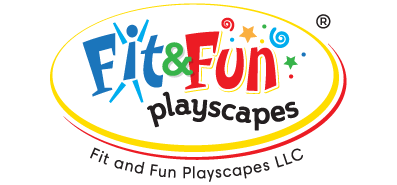Recess Resource Center
We’re excited to provide you with our Recess Resource Center, the “in” place to explore the many facets of recess. Since we’ve been designing games and activities and helping thousands of schools make more of recess over the last 10 years, we’ve collected quite a bit of information so we figured we’d pass all those experiences along! Here, you can access information about our outdoor and indoor recess activities, as well as learn more about why recess is important and how your school, playground or community can benefit from a well planned playground.
Keep checking back as we continue to add more features and information to this page.
Diversity of games is also important. It’s necessary to include all types of recess games available on the playground, since there are all types of kids: some games for mindfulness and wellness (like mindful movements and nutritional graphics), educational games (like chess, math or alphabet games), fitness games (like an agility ladder or four square) and sports games (like a basketball court key or kickball area) ensure a well-diversified playground that can be used for a variety of needs. Boredom breeds bullying and no one wants that!
Recess also needn’t just take place in schools. Active play and fitness can take place anywhere and everywhere, including bus stops, near school entrances, sidewalks, unused parking lots, park spaces, walkways, and even in the home. Fit and Fun Playscapes provides plenty of resources to bring recess and active play wherever you can imagine!
Why Is Recess Important?
Recess Planning and Zoning
When planning a playground/recess area, Fit and Fun Playscapes takes into consideration the three (3) physical activity zones as noted in Strategy 12 (Sports Areas, Fitness and Skills Areas and Relaxation Areas) when laying out our playground stencil games. Zoning a recess area involves dividing the space into separate areas or “zones” with specific activities associated with that particular space.

According to a recent study by the University of Missouri, “In the Zone: An Investigation into Physical Activity during Recess on Traditional Versus Zoned Playgrounds”, researchers found that zoning a playground with specific games improves a child’s chance of engagement and increases physical activity by 10%. Co-author Jill Barnas reports, “By reworking traditional recess games to be more vigorous, children are able to increase their physical activity in a really easy way, improving their health and doing better in school”. Fit and Fun Playscapes recognizes the importance of social and wellness aids and graphics as well. We enjoy turning these features into a custom playground/recess design.
Strategies to increase a child’s level of physical activity during recess are also outlined in “Increasing Physical Activity Through Recess” a research brief published in 2012 by the Active Living Research, a national program of the Robert Wood Johnson Foundation. Key research strategies include providing inexpensive playground equipment, recess supervisor training, painting playground surfaces with games or murals, activity zones, or any combination thereof.
Fit and Fun Playscapes is the only recess stencil company with professional designers on staff that can design a plan of your playground showing our recess stencil games transposed over an image of your playground area, complete in full color. Zoning recess spaces–as well as other planning considerations including points of access, buffer areas between games, etc–all factor into a well-organized playground/recess environment.

Now Offering: Free Virtual Meeting – Playground Planning Strategies
Sign up for this presentation to learn organizational and visual planning tips from the playground pros!
Check Out Our Active Recess Blog Posts
• Besides fighting childhood obesity, recess has other important physical benefits. Recess provides a well-documented and profound educational boost to children in the classroom. Their test scores prove it. We discuss in our blog post, Redefining Recess: The Educational Benefits of Recess.
• Michael J. Hynes, E.D., Superintendent of Schools for the Patchogue-Medford School District in Long Island, knows about the importance of recess.
He writes about it in our blog, Kids Need Play and Recess. Their Mental Health May Depend On It.
CREDITS:
The Crucial Role of Recess in School
Council On School Health
Pediatrics January 2013, 131 (1) 183-188; DOI
Recess Planning in Schools: A Guide to Putting Strategies for Recess into Practice
Centers for Disease Control and Prevention and SHAPE America — Society of Health and Physical
Educators.
Atlanta,
GA: Centers for Disease Control and Prevention, US Dept of Health and Human Services; 2017




